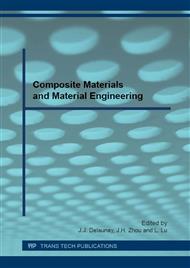p.101
p.105
p.111
p.117
p.121
p.125
p.135
p.140
p.144
An Experimental Behaviour of Cellular Lightweight Concrete-Filled Steel Square Tube Columns under Axial Compression
Abstract:
The axial load behavior of cellular lightweight concrete-filled tube (CLCFT) columns subjected to concentric axial compression is experimentally investigated. In the study, the maximum compressive loads obtained from the experiment were compared with the values calculated using Eurocode 4 design equation. The dimension of the square column specimens 150 mm in width and 750 mm in height. The effects of the ultimate compressive strengths and wall thicknesses of the steel tubes were observed. A total of 24 specimens, including 18 CLCFT columns and 6 reference cellular lightweight concrete (CLC) columns, were tested under monotonic axial compression. From the tests, it was found that the response curves of the CLCFT columns have a linear elastic behavior up to approximately 80-90% of their maximum compressive load. The nonlinear behavior of the columns has a ductile-like with strain-softening type. Tests also showed that the maximum compressive load and ductility of the CLCFT columns are increased significantly compared to the reference columns, depending mainly on the ultimate compressive strength of the concrete and the wall thickness of the steel tube. In addition, good agreement was observed between the predicted values using the Eurocode 4 design equations for the composite column and the experimental results.
Info:
Periodical:
Pages:
121-124
Citation:
Online since:
July 2016
Price:
Сopyright:
© 2016 Trans Tech Publications Ltd. All Rights Reserved
Share:
Citation:


